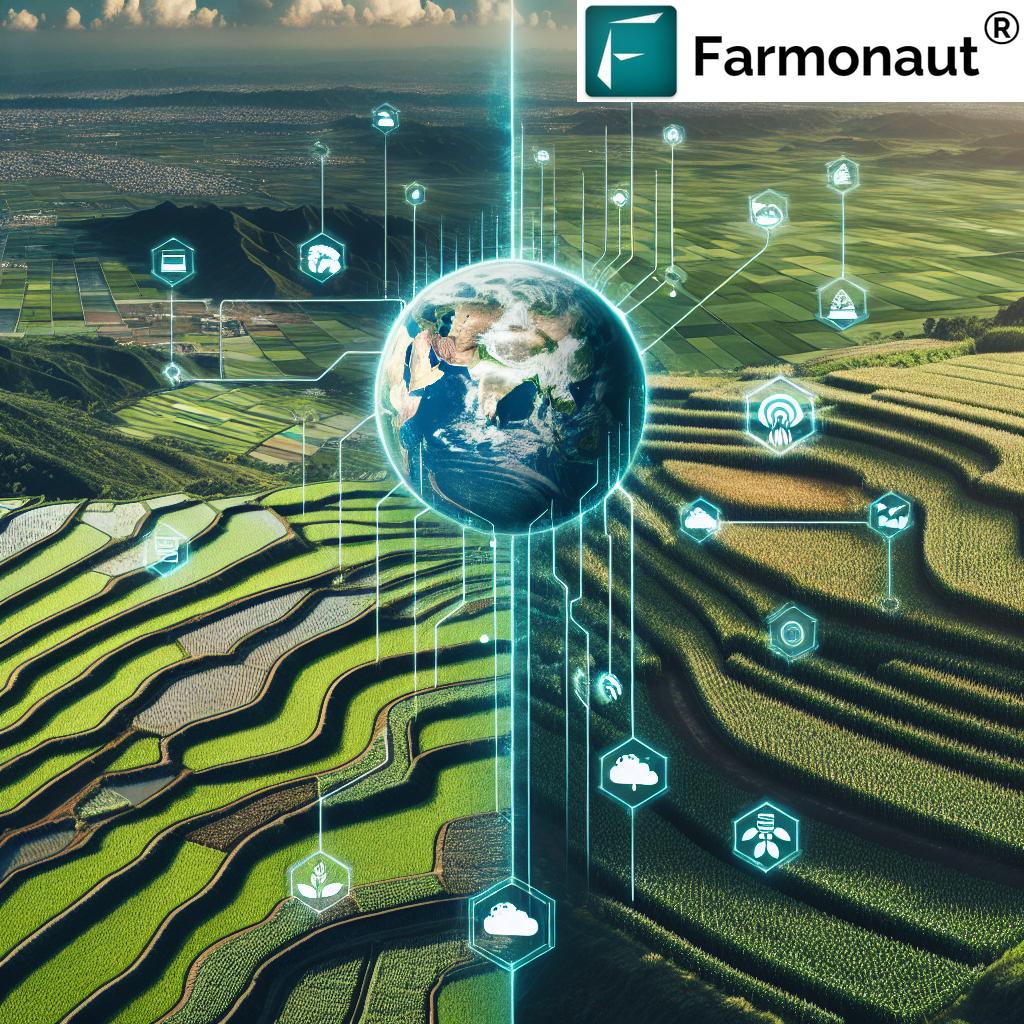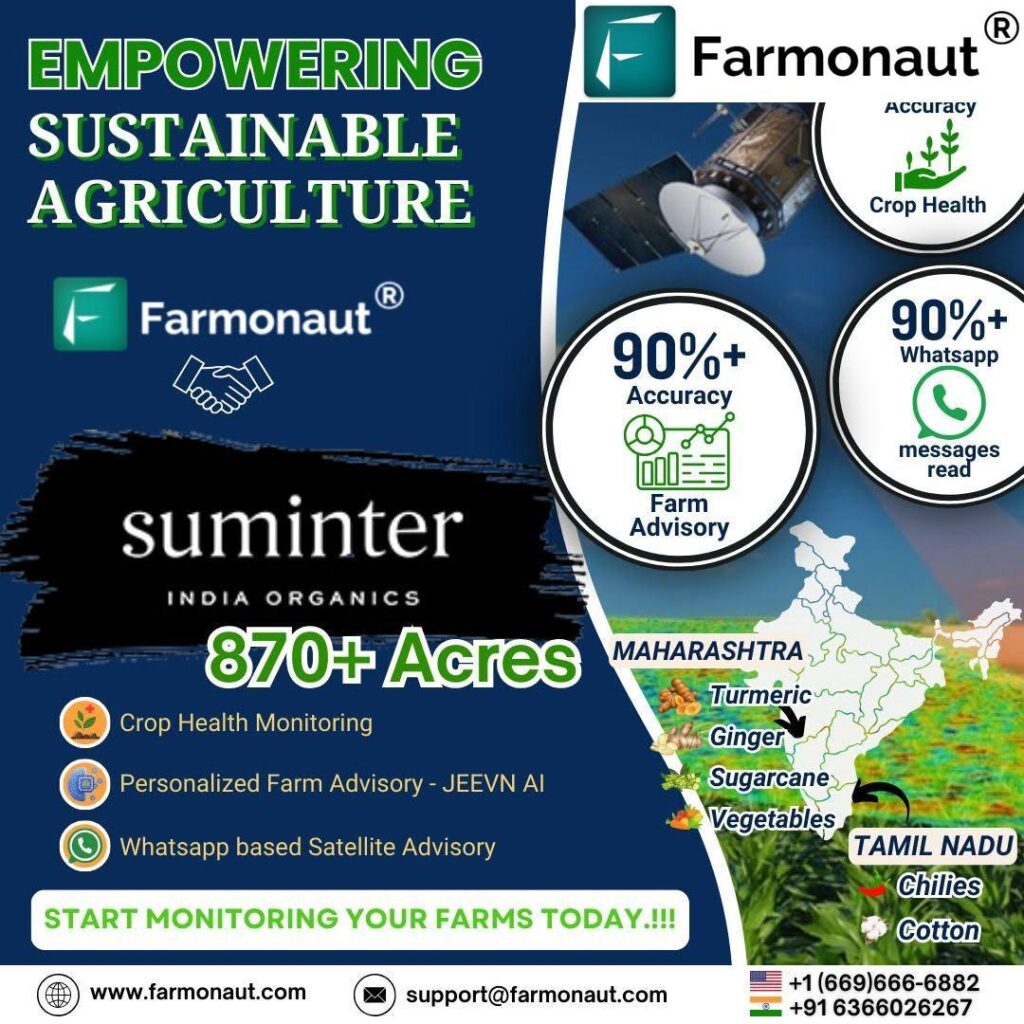Sustainable Agriculture Philippines: Top 7 Practices 2025
Sustainable Agriculture in the Philippines: Charting a Resilient Future for Filipino Farmers
Sustainable agriculture Philippines is at a turning point. As we usher in 2025, the agriculture of Philippines—an archipelago abundant in natural resources and home to millions of Filipino farmers—faces both formidable challenges and exciting opportunities. The imperative for sustainable farming in Philippines is driven by increasing climate variability, soil degradation, rural poverty, and growing food demands. Advances in sustainable practices are now vital, not just for food security, but for environmental stewardship, rural development, and climate resilience. Let’s explore how championing sustainable agriculture practices in the Philippines lays robust foundations for a future where agrarian prosperity and ecological balance thrive together.
“Over 10 million hectares in the Philippines are dedicated to sustainable agriculture practices as of 2025.”
Understanding Sustainable Agriculture in the Philippine Context
Sustainable agriculture refers to methods and systems that meet current food needs without compromising the ability of future generations to meet theirs. In the Philippines, this means blending traditional Filipino knowledge with modern technological innovations to manage soil health, enhance productivity, and reduce harm caused by synthetic fertilizers and pesticides. The country’s location in the Pacific exposes it to typhoons, flooding, drought, and other climate risks—making resilience and adaptability essential in all aspects of farm management.
By 2025, national objectives emphasize boosting yield and food production, but not at the expense of the environment. From Isabela’s rice fields to the coconut plantations of Mindoro and Palawan, adopting sustainable agriculture practices in the Philippines has become key to rural development and food security.

Why Sustainable Farming Matters in the Philippines
- Abundant natural resources require careful resource management to prevent depletion.
- Rural livelihoods depend largely on agriculture—making resilient farming central to poverty alleviation.
- Food security needs smart, sustainable growth in yields.
- Climate resilience is a top priority for smallholder farmers who face droughts and typhoons.
- The archipelago’s biodiversity thrives best with sustainable land use.
Top 7 Sustainable Agriculture Practices in the Philippines
Below, we explore the key sustainable agriculture practices in the Philippines that have emerged as leading solutions for 2025 and beyond. These methods empower Filipino farmers, conserve the environment, improve soil health, and secure a better future for the agriculture of Philippines.
Practices Overview Table
For a structured comparison, refer to the table below highlighting the estimated adoption rates, benefits, and regional examples for each leading practice.
| Practice Name | Description | Estimated Adoption Rate (%) | Key Environmental Impact | Potential Yield Improvement (%) | Example Region |
|---|---|---|---|---|---|
| Agroforestry & Diversified Cropping | Integrates trees, shrubs, and multiple crops in farmland to reduce erosion, enrich soil, and diversify incomes. | 38% | Reduced soil erosion, carbon sequestration | 15–30% | Mindoro, Palawan |
| Organic Farming & Indigenous Inputs | Avoids synthetic fertilizers/pesticides, promotes natural compost, vermicast, and biochar, and uses local pest control. | 21% | Soil health, reduced chemical runoff | 10–20% | Negros Occidental, Bukidnon |
| Water Management & Climate Adaptation | Adopts SRI, rainwater harvesting, and efficient irrigation to ensure water sustainability for crops. | 34% | Reduced water use, increased resilience | 12–18% | Nueva Ecija, Isabela |
| Community-Based Approaches & Cooperatives | Empowers smallholders via collective knowledge-sharing and marketing for sustainable adoption. | 26% | Economic viability, rural development | 8–15% | Benguet, Batangas |
| Integrated Pest Management (IPM) | Combines biological, cultural, and appropriate chemical tools to control pests safely. | 31% | Limits synthetic pesticide use | 8–17% | Pangasinan, Iloilo |
| Conservation Agriculture & Soil Health Restoration | Uses minimal tillage, crop cover, and rotation to enhance soil life and fertility over time. | 25% | Rebuilds soil organic matter, boosts productivity | 10–22% | Ifugao, Bohol |
| Precision & Digital Agriculture | Utilizes satellite data, remote monitoring, and AI for smart resource use and management. | 18% | Optimized inputs, reduced waste | 20–30% | Central Luzon, Davao |
1. Agroforestry and Diversified Cropping Systems
Agroforestry—the intentional integration of trees and shrubs within agricultural land—stands at the forefront of sustainable agriculture practices in the Philippines for 2025. By blending trees and multiple crops, Filipino farmers not only improve soil health and fertility but also secure additional income sources from timber, fruits, and nuts. In regions like Mindoro and Palawan, these systems also help conservation efforts by minimizing erosion, providing habitats for native species, and increasing carbon sequestration—a vital climate mitigation measure.
The diversification of cropping reduces the likelihood of pest outbreaks and lessens financial risk by spreading income across several crops instead of relying on only one. Key components include:
- Integrating trees within farmland such as coconut, coffee, or cacao with grains or root crops
- Encouraging diversified cropping through intercropping and crop rotation
- Providing additional sources of income—timber, fruits, medicinal plants
- Enhancing biodiversity and pollination
- Mitigating the impact of typhoons and flooding by stabilizing landscapes
The Department of Agriculture and various NGO programs have promoted these systems through community-based trainings and incentive schemes, given their sustainability and resilience.
Benefits of Agroforestry for Filipino Farmers
- Improves soil fertility naturally, reducing dependency on synthetic fertilizers
- Reduces erosion—a major risk on many hilly and upland farms
- Provides economic resilience: income from timber, fruits, and intercrops
- Enhances climate resilience for rural communities
- Contributes to biodiversity conservation
Localized Example: Mindoro and Palawan
Agroforestry in Mindoro and Palawan features coconut trees integrated with bananas, coffee, or cacao—a model now promoted across various Philippine islands to boost productivity, income, and food diversity.
2. Organic Farming and Use of Indigenous Inputs
A growing movement among Filipino farmers leans toward organic farming. This approach shuns synthetic fertilizers and pesticides in favor of compost, vermicast, and biochar, reinforcing soil health and environmental safety. Demand for organic food from health-conscious consumers and incentives from the Philippine government further fuel this transition.
The Department of Agriculture’s Organic Agriculture Program has vigorously promoted community-based trainings in compost-making, use of indigenous microorganisms, and sustainable pest control methods—often derived from native plants. This movement has led to a remarkable increase in organic farm area from Luzon to Mindanao.
Why Indigenous Inputs and Bio-pesticides Matter
- Compost, vermicast, and biochar naturally enhance soil fertility and structure
- Organic matter increases water retention and limits erosion—vital during drought or heavy rains
- Bio-pesticides from native species reduce the need for synthetic chemicals, improving farm biodiversity and health
- Community trainings revive and transmit traditional Filipino knowledge
The dual benefits of healthier food and lower chemical residues have made organic produce a premium product at urban markets in Manila, Cebu, and Davao.
3. Water Management and Climate Adaptation
With climate change intensifying, water management is a central pillar of sustainable farming philippines, especially in water-stressed and typhoon-prone provinces like Nueva Ecija and Isabela.
Adopting the System of Rice Intensification (SRI) is among the most effective responses. SRI uses less water and seeds but can improve yields by 20-30%. Other approaches include rainwater harvesting, drip irrigation, and rehabilitating traditional water catchment systems—essential for remote barangays with irregular rainfall.
Effective Water Management Strategies
- System of Rice Intensification (SRI): Reduces water usage by 30-50% and increases climate resilience
- Rainwater harvesting: Small reservoirs and ponds buffer farms through dry spells
- Drip irrigation and micro-sprinklers: Targeted watering, especially valuable in high-value vegetable farming
- Rehabilitating water catchment systems: Revives centuries-old Filipino technology adapted to modern needs
- Promotes farm-level conservation and efficient resource management
Localizing Climate Adaptation: Nueva Ecija & Isabela
In the rice belts of Nueva Ecija and Isabela, SRI and water-saving technologies empower smallholders to produce more rice—even with less water and unpredictable rainfall.
Harnessing Technology for Water and Resource Management
For those exploring digital and satellite-based water monitoring in farming, Farmonaut’s fleet and resource management solutions allow real-time tracking of water usage, crop health (NDVI/NDWI), and field conditions—enabling farmers and agri-enterprises to reduce input costs, monitor drought risk, and plan sustainable irrigation strategies.
4. Community-Based and Cooperative Approaches
Building a sustainable and resilient agriculture sector in the Philippines requires more than individual initiative. Community empowerment and cooperatives provide rural farmers with knowledge sharing, collective marketing, improved access to credit, and enhanced technical assistance.
Approaches such as farmer field schools, cluster farming, and new-generation cooperatives strengthen adoption of sustainable methods by promoting group learning and farm consolidation—allowing smallholders to benefit from economies of scale.
- Farmer field schools as hubs for adaptive practices and peer learning
- Cooperatives facilitate access to markets and lowering transaction costs
- Joint bulk purchasing of eco-friendly inputs like organic compost
- Shared processing and storage facilities
Government rural development programs, such as the Department of Agriculture’s “Plant, Plant, Plant” initiative, work closely with these community groups to drive systemic change—ensuring that knowledge turns into action at the grassroots.
For large cooperatives and rural enterprises, Farmonaut’s large-scale farm management technology provides coordinated, satellite-driven insight into land use, resource allocation, and field-level progress—enabling community-based organizations to track outcomes and support sustainable growth.
“Agroforestry adoption in the Philippines increased by 35% between 2020 and 2025, boosting rural livelihoods.”
5. Integrated Pest Management (IPM)
Integrated Pest Management (IPM) is a cornerstone of sustainable farming philippines. IPM combines biological, cultural, physical, and—when necessary—minimal chemical tools to manage pests safely and efficiently. Instead of blanket spraying with synthetic pesticides, it relies on empirically derived thresholds, ecological monitoring, and targeted interventions.
- Encourages the use of natural predators and parasitoids
- Emphasizes crop rotation and intercropping to break pest cycles
- Advocates physical controls (like sticky traps, nets) and biological extracts from indigenous plants
- Limits chemical applications to emergency cases only
Such practices prevent pesticide resistance, reduce pollution, and enhance long-term soil and human health. Smallholder programs in Pangasinan and Iloilo have reported significant reductions in pest outbreaks and lower production costs, increasing overall yield stability.
6. Conservation Agriculture and Soil Health Restoration
Healthy soil is the bedrock of resilient agriculture of Philippines, supporting both sustainable food production and climate mitigation. Conservation agriculture (CA) is a suite of methods centered on minimal soil disturbance (no/reduced tillage), continuous soil cover, and strategic rotation of crops.
- Cover crops (like legumes/grasses) protect against erosion, boost nitrogen, and add organic matter
- Crop rotation prevents nutrient depletion and disrupts disease cycles
- Minimal or zero tillage preserves soil structure, boosts water retention, and fosters beneficial microorganisms
Pilot programs in Ifugao and Bohol demonstrate marked improvements in soil carbon, water holding capacity, and rain infiltration after sustained CA practice—critical for combating erosion in the archipelago’s hilly regions.
For producers and agribusinesses invested in tracking and restoring soil quality, Farmonaut’s carbon footprinting solution provides actionable satellite data to monitor farm-level emissions, optimize conservation practices, and comply with emerging environmental regulations.
7. Precision and Digital Agriculture
Digital transformation is rapidly shaping the future of sustainable agriculture practices in the Philippines. Precision and digital agriculture harness tools like satellite imagery, drones, remote sensors, and AI-based advisory to enable Filipino farmers to:
- Monitor crop health, soil moisture, and pest outbreaks in real time
- Apply the exact amount of water, fertilizers, and other inputs—reducing waste
- Access advisories for weather, irrigation, and harvest timing
- Ensure supply chain transparency through blockchain technology
These methods are especially suited to consolidated farms and agri-enterprises, but are increasingly accessible to smallholders thanks to affordable cloud and app-based platforms. For example, remote monitoring helps farmers spot drought stress, disease, or nutrient deficiency early—improving not just yields but resource efficiency.
Supply chain integrity is equally important. Solutions such as Farmonaut’s blockchain-based traceability extend transparency and consumer trust from the farm to fork—vital for high-value exports and premium organic produce.
Expanding Access through Apps & APIs
Digital agriculture is rapidly democratized. Highly accessible smartphone and browser apps—like those offered by Farmonaut—enable smallholders, agri-enterprises, and government agencies to:
- Remotely assess fields using cost-effective satellite imagery and AI
- Receive tailored, real-time crop and weather advisories
- Automate documentation for insurance, loans, and supply chain management
Our Farmonaut App and robust API suite empower businesses and developers to build bespoke solutions for their clients, whether managing micro-plots or vast plantations.
For developers, the API Developer Docs provide all the guidance to integrate advanced satellite analytics and weather intelligence directly into their operations and software.
For those in the oil palm sector, Farmonaut’s crop plantation and forest advisory delivers specialized satellite and AI insights for superior resource management and sustainable yield improvements.
Government and NGO Contributions to Sustainable Farming in the Philippines
The Philippine government, through agencies like the Department of Agriculture and Bureau of Soil and Water Management, is prioritizing sustainable agriculture as integral to rural and national development. National programs—including the “Plant, Plant, Plant” initiative—focus on sustainable methods to meet rising food needs and rural employment targets.
International NGOs and research partners further bolster these efforts by:
- Promoting climate-smart agriculture and digital adoption
- Conducting capacity-building and farm-level trainings
- Facilitating market access for smallholders
- Protecting vulnerable ecosystems and water catchments
Sustained coordination helps align public and private sector investments, channeling resources to the most climate-vulnerable and underserved communities.
Farmonaut’s Role in Advancing Sustainable Agriculture in the Philippines
As a pioneering satellite technology company, we at Farmonaut aim to democratize access to powerful, data-driven solutions for sustainable agriculture Philippines. Our platform combines real-time satellite monitoring, AI-based advisory systems, blockchain-based traceability, and resource management tools for seamless integration with farms of all sizes.
- Empowering farmers, coops, and businesses across the archipelago to monitor soil, water, and crop health
- Improving yields and reducing input costs with AI-driven recommendations
- Supporting environmental stewardship via carbon tracking tools
- Building supply chain trust through blockchain modules
- Facilitating access to financing with satellite-based verification for loans and crop insurance (crop loan and insurance solutions)
Full Practices Overview Table (2025 Edition)
| Practice Name | Description | Estimated Adoption Rate (%) | Key Environmental Impact | Potential Yield Improvement (%) | Example Region |
|---|---|---|---|---|---|
| Agroforestry & Diversified Cropping | Integrates trees, shrubs, and multiple crops in farmland to reduce erosion, enrich soil, and diversify incomes. | 38% | Reduced soil erosion, carbon sequestration | 15–30% | Mindoro, Palawan |
| Organic Farming & Indigenous Inputs | Avoids synthetic fertilizers/pesticides, promotes natural compost, vermicast, and biochar, and uses local pest control. | 21% | Soil health, reduced chemical runoff | 10–20% | Negros Occidental, Bukidnon |
| Water Management & Climate Adaptation | Adopts SRI, rainwater harvesting, and efficient irrigation to ensure water sustainability for crops. | 34% | Reduced water use, increased resilience | 12–18% | Nueva Ecija, Isabela |
| Community-Based Approaches & Cooperatives | Empowers smallholders via collective knowledge-sharing and marketing for sustainable adoption. | 26% | Economic viability, rural development | 8–15% | Benguet, Batangas |
| Integrated Pest Management (IPM) | Combines biological, cultural, and appropriate chemical tools to control pests safely. | 31% | Limits synthetic pesticide use | 8–17% | Pangasinan, Iloilo |
| Conservation Agriculture & Soil Health Restoration | Uses minimal tillage, crop cover, and rotation to enhance soil life and fertility over time. | 25% | Rebuilds soil organic matter, boosts productivity | 10–22% | Ifugao, Bohol |
| Precision & Digital Agriculture | Utilizes satellite data, remote monitoring, and AI for smart resource use and management. | 18% | Optimized inputs, reduced waste | 20–30% | Central Luzon, Davao |
Farmonaut Products, Apps & Developer Services
Explore the complete suite of services for agri-operators, developers, and government users:
Farmonaut API
|
API Developer Docs
FAQ: Sustainable Farming in the Philippines (2025 & Beyond)
Sustainable agriculture Philippines involves managing crops, livestock, and resources in ways that meet current food needs while preserving the environment for future generations. This includes integrating indigenous practices, digital tools, and climate adaptation measures specific to the country’s archipelagic geography.
Q2: Which regions are leading in the adoption of sustainable practices?
Mindoro, Palawan, Nueva Ecija, Isabela, Negros Occidental, Ifugao, and Bohol show high adoption of agroforestry, climate adaptation, and organic techniques, serving as models for other regions in the archipelago.
Q3: Is organic farming feasible for small Filipino farmers?
Yes, with increasing government incentives, market demand, and capacity-building through cooperative/community programs, organic farming is increasingly viable, offering higher income and lower input costs.
Q4: How does digital technology support sustainable farming?
Mobile apps, affordable satellite imagery, and AI-driven advice let farmers monitor crops and soil, optimize resources, and respond to climate events quickly—all key to sustainable farming philippines. Farmonaut’s app and API solutions provide these insights efficiently and affordably.
Q5: What are the biggest challenges for sustainable agriculture in the Philippines?
Land tenure insecurity, lack of market infrastructure, scaling up innovations, and balancing short-term yield targets with long-term sustainability are persistent hurdles.
Q6: How can farmers access Farmonaut’s solutions?
Through the Farmonaut app (web, Android, iOS), API, and tailored service packages designed for all scales—from individual to large cooperative operations.
Challenges and the Road Ahead: Towards 2025 and Beyond
Despite many sustained efforts, sustainable agriculture philippines faces hurdles:
- Land tenure insecurity can limit investment in long-term practices
- Expanding organic and diversified farming requires stable market access and improved infrastructure, often lacking in remote rural areas
- The delicate balance between immediate yield gains and safeguarding natural resources remains a central tension
Ongoing innovation and stronger institution-building are crucial, as are efforts to harmonize traditional Filipino knowledge with the latest digital and ecological approaches.
Conclusion: Building a Sustainable Future for Agriculture of Philippines
The imperative of sustainable agriculture philippines is not just a set of individual farm practices but an entire ethos—one that harmonizes ecological health, economic opportunity, and rural social equity. By 2025, these top practices—from agroforestry and conservation tillage to digital, AI-enabled farming—present a holistic framework for charting the resilient, food-secure, and environmentally responsible future that Filipino agriculture deserves.
Whether you are a smallholder farmer, agribusiness owner, government stakeholder, or agri-tech developer, the journey toward sustainable farming in the philippines is one of collaboration, innovation, and deep respect for both tradition and the environment. Embracing these changes is vital to ensuring the Philippines remains a thriving, food-secure nation—rich in its natural resources and rural culture—for generations to come.









